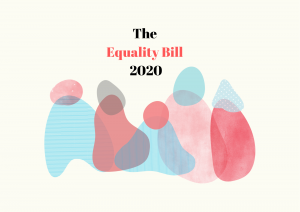
India has witnessed a rise in intolerance over the past few months. From intolerance towards dissent, housing decisions taken based on political leanings to violence towards minorities (religious or socio-economic), show a growing unease and divide in the citizens of India. These acts of violence, discrimination or unequal treatment can be divided into two categories.
The first category would be discrimination by a state or what is seen as a public act by the State. These acts are protected by the Constitution of India under Art. 14, 15, 16, 17 and 29 which guarantee equality and non-discrimination. Provisions to protect oneself from state discrimination is made through fundamental rights.
The second category of discrimination is the one carried out by private persons, whether individuals or corporations, through their private acts. Save for a small interpretation of Art. 15 (2) of the Indian Constitution in the case of IMA v. Union of India, there is no redressal for private discrimination faced by people daily in the community.
The existence of different laws for differing forms of discrimination makes them largely inaccessible in a comprehensive way. The discrimination may be because one is a woman, belonging to a particular religion, sexual orientation, food preferences or all of it together, yet the various laws in India only give a fragmented and piecemeal approach to the wider scope of discrimination. Several anti-discrimination statutes protect only specific identities and not condemn inequality as a whole. There is, thus, a need for a comprehensive and intersectional look at the discrimination faced.
For this reason, to fill the lacunae, CLPR drafted an Equality Bill. This is aimed to be an overarching bill to promote equality and to prevent and prohibit all forms of discrimination against persons on the grounds of caste, race, ethnicity, descent, sex, sexual orientation, gender identity, tribe, nationality, disability, marital status, pregnancy, health (including HIV/AIDS status), occupation, political opinion and belief, linguistic identity, place of birth, age, migration, religion, refugee status, socio-economic status, occupation, food preference or any combination of these characteristics.
Through its prohibition, the bill recognizes aggravated forms of inequality caused by multiple, intersectional and systemic discrimination. Thus, through the comprehensive coverage, it is the first statute proposed in India which gives a holistic approach to equality laws. It combines the need for affirmative action, non-discrimination and equal treatment – concepts that are similar in their objective but very different in the method of application.
Through the Equality Bill, certain areas where discrimination is most commonly seen is recognized – viz, employment, education, public buildings and public spaces, healthcare, housing, and land. Remedies against the discrimination can be gotten in Equality Courts established under the law, thereby making it possible to find remedies for previous private actions. Through these provisions, the Equality Bill is trying to bridge the gap left through the existing legislation.
To combat the intersectional discrimination seen in Indian society through private actions, specific legislation is necessary. The Equality Bill would work to ensure equality for every citizen of the country by protecting all forms of discrimination, thereby aiding in its transformation into a truly democratic society.

